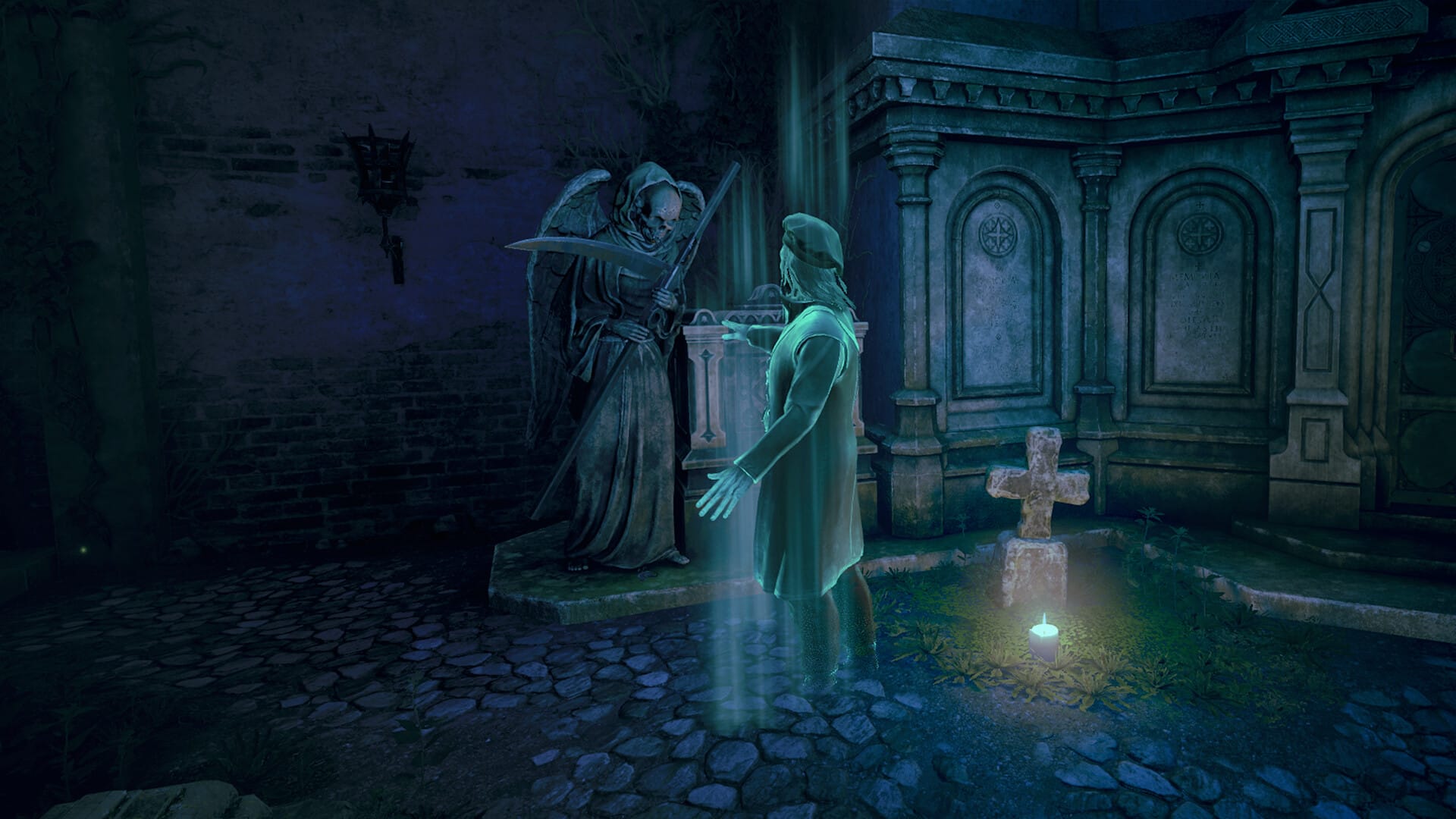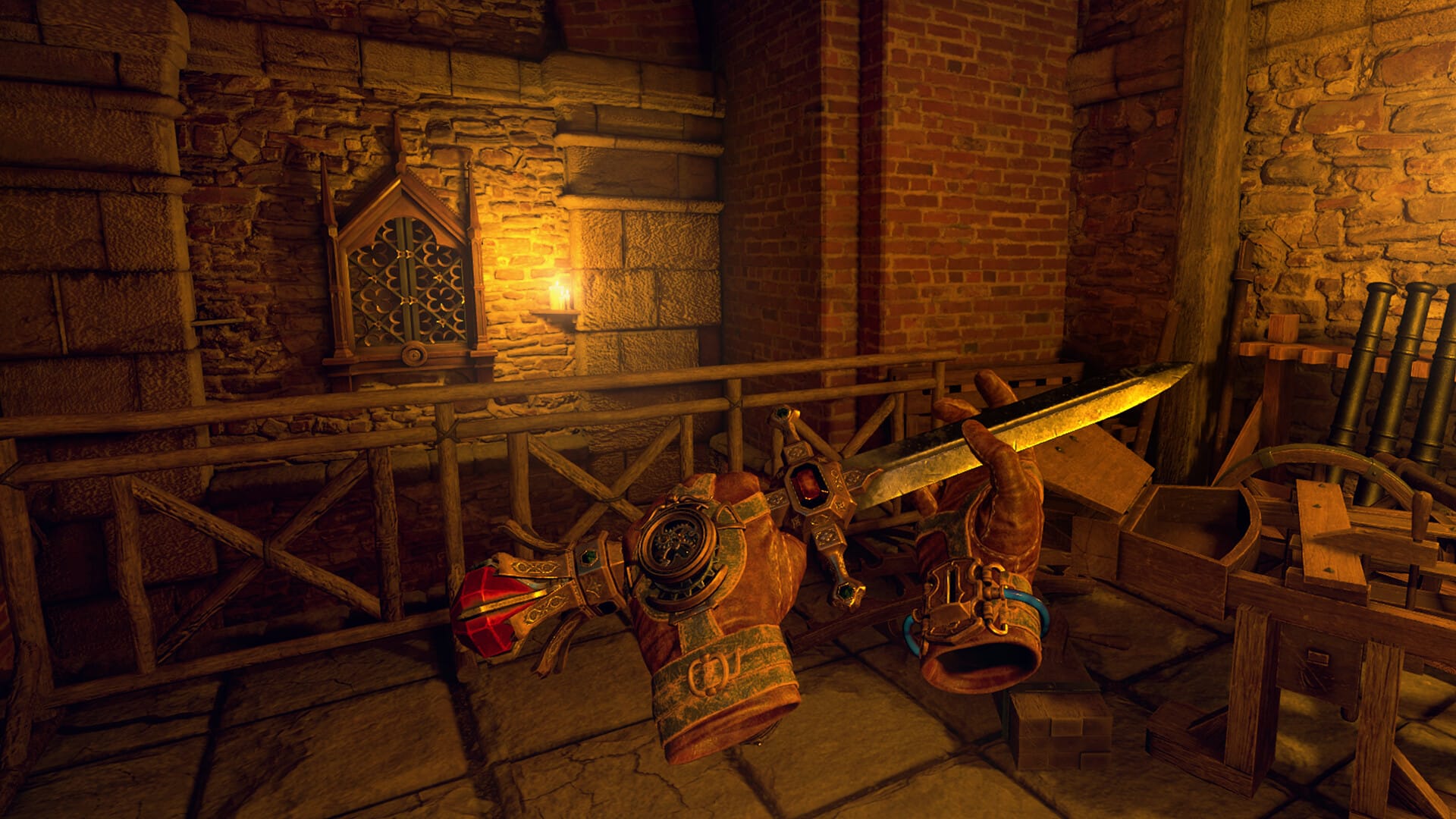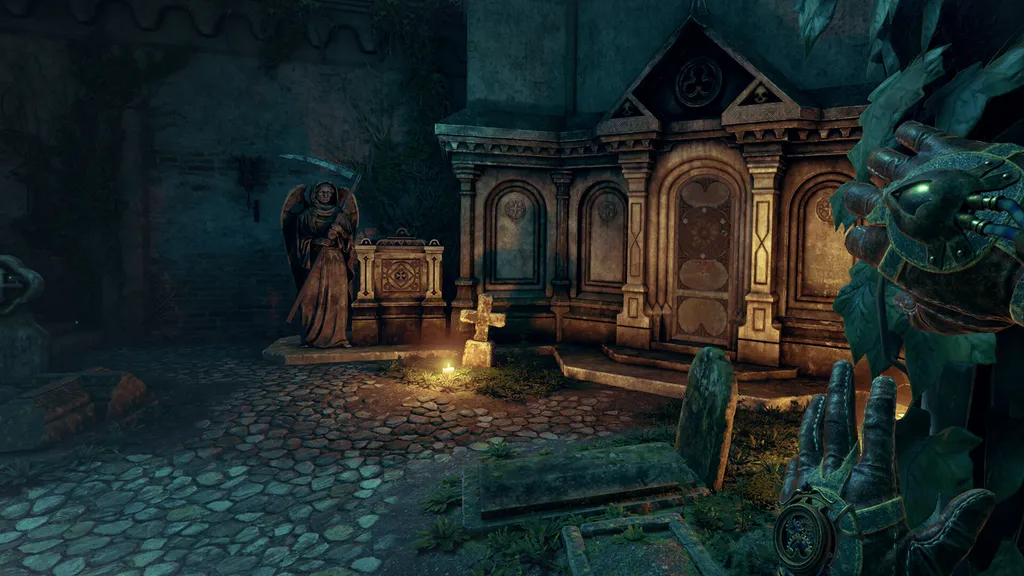Step inside the mind of a genius in Blue Brain Games’ 16th-century VR puzzler.
Blue Brain Games’ The House of Da Vinci series puts you in the shoes of an ambitious apprentice investigating a series of mysteries surrounding their teacher… Leonardo Da Vinci. The three available flatscreen outings see you explore stunning Renaissance environments and solve quizzical riddles, and the studio’s beloved puzzling framework is making its way to VR headsets later this year. The House of Da Vinci VR is a love letter to the enigmatic inventor that plays to the studio’s established strengths. A hands-on demo at Gamescom saw me inspecting and tampering with intricate objects to unravel clues and track down the legendary maker behind the Vitruvian Man.
My demo began in an atmospheric graveyard complete with mossy greenery and intimidating stone skeletons. Here, I got to grips with the navigation mechanics, such as the friendly teleportation system, which involves pointing and launching my body around the space using the controllers. Additionally, I enjoy fiddling with a mechanized crown dial that pops out of your left wrist. By twisting it forward and backward, this unique tool allows me to see past events overlaid in the playspace, revealing important clues that progress the narrative. Elsewhere, I pawed and prodded at bricks and statues and was wowed by the detailed hand tracking, which made dealing with the demo’s finicky puzzle pieces a tactile and rewarding process.

While I consider myself a fan of riddles, the complex puzzles in The House of Da Vinci VR don’t pull their punches and require plenty of lateral thinking. I’m keen not to spoil any specifics, but I'm enjoying the process of navigating each space, picking up on the critical details of the past and present with the time-travelling dial, and threading them together to find the next step. It's particularly cool to see that some of the devices you face are based on original Da Vinci designs, too. The developers have clearly done their homework and embedded their research in every environment.
Despite my best efforts, I inevitably encountered a few puzzle hurdles my brain couldn’t quite clear. Thankfully, The House of Da Vinci VR also features a handy hint system, which could point me in the right direction via a bright pencil marking overlaid in each scene. Instead of giving me the exact answer or an obvious clue, I was always carefully nudged towards the correct area or tool. This approach works well, moving me forward without spoiling the solution and robbing me of my pride.

The carefully designed and beautifully lit 16th-century set pieces stood out the most during my time with The House of Da Vinci VR. Warm rooms filled with candlelight plays against the mystical blue of the moon, creating a soft ambience that's constantly caught between comforting and tense. This blend is amplified by the ASMR-esque soundscape, including creaky gates and brain-tickling clicks that unnerved me throughout. The House of Da Vinci VR is by no means a horror game, but the organic sound design and moody rooms maintain a sense of eerie discomfort that feels fitting for this mysterious historical story.
The House of Da Vinci VR is coming to Meta Quest and Steam later this year. Based on our brief time with it, it’s shaping up to be a meaningful addition to a growing list of immersive virtual reality puzzler adventures.


























